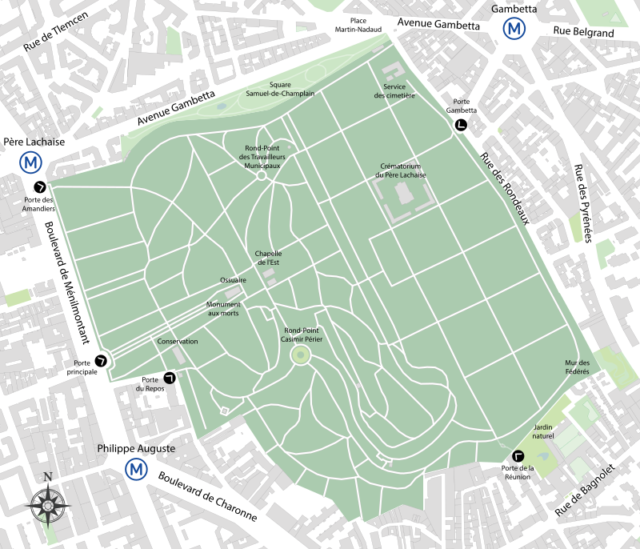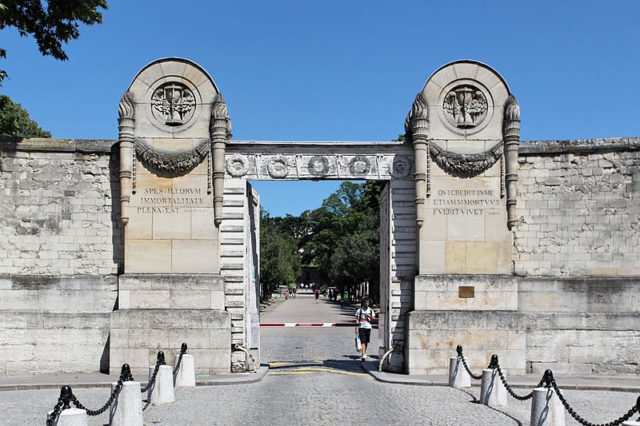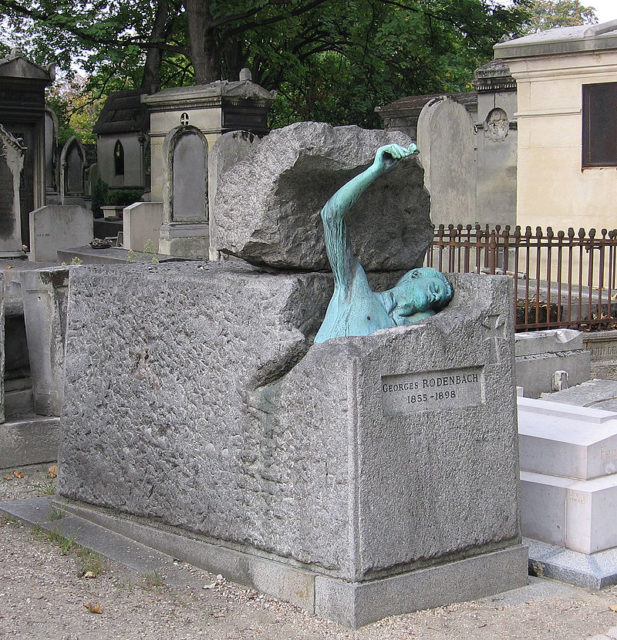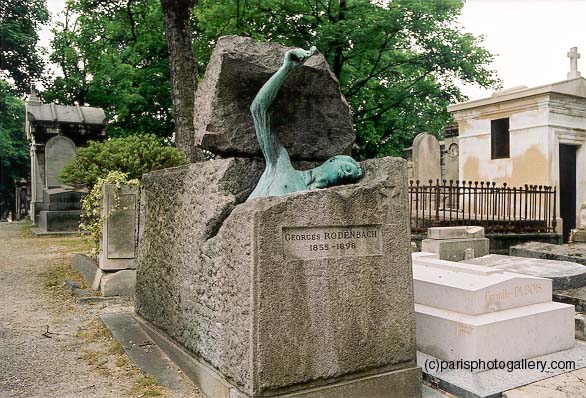The Père Lachaise Cemetary in Paris is one of the most famous cemeteries in the world. Established in 1804, with the size of 110 acres, it’s the biggest cemetery in the City of Light.

Paris has always been loved by musicians, writers, singers, painters, and the like, so it’s no wonder Père Lachaise is the place where many of the world’s most famous artists were buried. Edith Piaf, Jim Morrison, Frederic Chopin, Honore De Balzac, Moliere to name but a few.
These are only some of the eminent names whose tombs are among the famous at Père Lachaise. Many of these tombs are often visited by fans and tourists who want to pay their final respects to their idols. At the same time, some of the Père Lachaise graves are visited because of their extravagant and elegant monuments. Such is the case with the grave of Georges Rodenbach.

Georges Rodenbach was a Belgian novelist and poet, born on 16 July 1855. He belonged to the artistic symbolist movement. Besides writing poetry, Georges worked as a lawyer and a journalist. He spent most of his life in Belgium and moved to Paris 10 years before his death in 1898. His most famous piece is the novel Bruges-la-Morte.
The book was published in 1892 and it tells the story of a widower who could not get over the death of his wife and lives in the past. He rarely leaves the house and spends his time among his wife’s possessions: her clothes, shoes, letters, even a piece of her hair. Bruges-la-Morte was an inspiration to many poets and composers, as it was so tragic and romantic.

Knowing his most famous book, the form of Georges Rodenbach’s grave comes as no surprise. The tomb shows a sculpture of a bronze figure emerging from the grave, holding a rose in the right hand.
The figure of the man is in memory of Rodenbach. Such a dramatic grave seems proper for a man who was a real romantic and wrote about love and tragedy.
